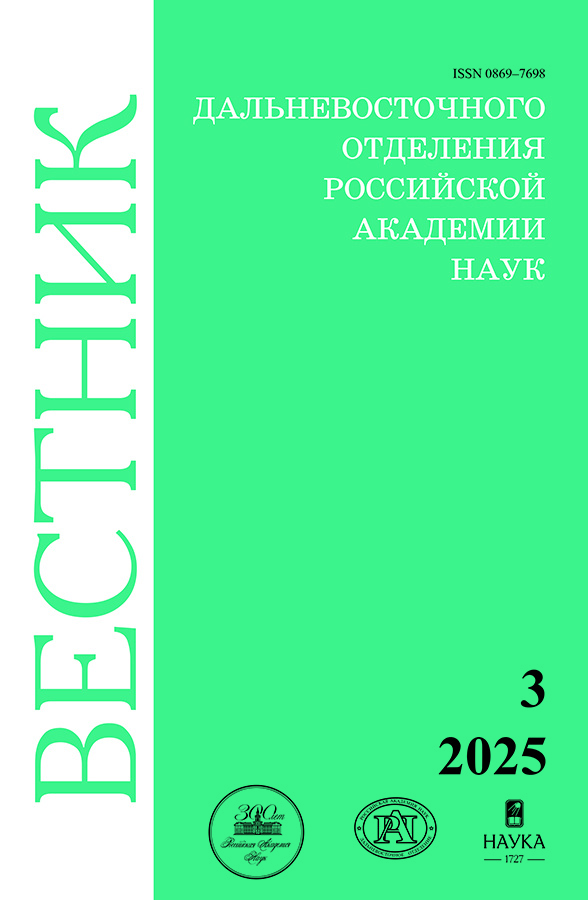Anatomical structure of the stem and leaf of Sanguisorba parviflora and S. tenuifolia (Rosaceae)
- Authors: Anokhina A.V.1, Lyubavina I.V.2
-
Affiliations:
- Blagoveshchensk State Pedagogical University
- Amur Branch of the Botanical Garden-Institute FEB RAS
- Issue: No 3 (2025)
- Pages: 43-51
- Section: Biological Sciences
- URL: https://modernonco.orscience.ru/0869-7698/article/view/688927
- DOI: https://doi.org/10.31857/S0869769825030044
- EDN: https://elibrary.ru/PLVYAW
- ID: 688927
Cite item
Full Text
Abstract
Using light microscopy, a comparative study of the signs of the anatomical structure of the stem and leaf of 2 morphologically similar species of the genus Sanguisorba L.: S. parviflora (Maxim.) Takeda and S. tenuifolia Fisch. ex Link was carried out. In the stem structure of the studied species, the diagnostic feature is only the number of conducting beams on the cross section. We have not identified any taxonomically significant features in the structure of the leaf. We agree with the opinion of those taxonomists who consider S. tenuifolia as a synonym of S. parviflora. Conventionally, only quantitative signs can be informative: the thickness of the leaf blade, the length of the cells of the upper epidermis, the number of stomata per 1 mm2 of the leaf surface.
Keywords
Full Text
About the authors
Anna V. Anokhina
Blagoveshchensk State Pedagogical University
Author for correspondence.
Email: annabgpu@yandex.ru
ORCID iD: 0000-0002-1113-4501
Candidate of Sciences in Biology, Docent
Russian Federation, BlagoveshchenskIrina V. Lyubavina
Amur Branch of the Botanical Garden-Institute FEB RAS
Email: andrina97@mail.ru
ORCID iD: 0009-0006-8314-0501
Senior Laboratory Assistant
Russian Federation, BlagoveshchenskReferences
- Yakubov V.V. Genus Sanguisorba L. – Krovokhlebka. In: Vascular plants of the Siberian Far East: In 8 vols. Vol. 8. St. Petersburg: Nauka; 1996. 383 p. (In Russ.).
- Starchenko V.M. Flora of the Amur region and issues of its protection: The Far East of Russia. Moscow: Nauka; 2008. 228 p. (In Russ.).
- Akulov A.N. Phenolic compounds of blood phlebotomy cell culture of medicinal Sanguisorba officinalis L. Chemistry of Plant Raw Materials. 2019;(1):241–250. (In Russ.).
- Popov I.V., Andreeva I.N., Gavrilin M.V. Determination of tannin in raw materials and preparations of medicinal hemophlebone by HPLC method. Chemico-pharmaceutical Journal. 2003;37(7):24–26. (In Russ.).
- Snegireva K.D. Quantitative content of tannins in medicinal raw materials of medicinal hemophlebus. In: Young researcher: challenges and prospects: materials of the CLXIX international scientific and practical conference. Moscow; 2020. Vol. 22 (169). P. 155–157. (In Russ.).
- Kazeeva A.R. Pharmacognostic study of medicinal hemophlebitis (Sanguisorba officinalis L.) and prospects for its use in medicine: abstract of the dissertation of the Candidate. Biol. Sciences. Samara; 2017. 25 p. (In Russ.).
- Maltseva E.M., Egorova N.O., Egorova I.N., Zenina N.A., Ivanova O.A. Anti-microbial activity of dry rhizome extract with medicinal hemophlebus roots. In: Ways and forms of improving pharmaceutical education. Topical issues of the development and research of new medicines: materials of the 7th International Scientific and Methodological Conference “Pharmaceutical Education-2018”. Voronezh: Publishing House of the Voronezh State University; 2018. P. 508–512. (In Russ.).
- Saparklycheva S.E., Chapalda T.L. Antimicrobial activity of medicinal hemophlebus (Sanguisorba officinalis L.). Agrarian Education and Science. 2020;(2):10. (In Russ.).
- Tyurin A.V. Biology of flowering and pollination of medicinal hemophlebus. Scientific Leader. 2023;137(39):32–39. (In Russ.).
- Kazeeva A.R., Pupykina K.A. The study of morphological and anatomical signs of rhizomes with roots and herbs of medicinal hemophlebus. Issues of Quality Assurance of Medicinal Products. 2016;11(1):17–22. (In Russ.).
- Marchishin S.M., Seraya L.M., Ostrovskaya G.I., Kudrya V.V. Investigation of the morphological and anatomical structure of the herb hemophlebus officinalis (Sanguisorba officinalis L.). Ukrainian Biopharmaceutical Journal. 2015;37(2):85–89. (In Russ.).
- Strupan E.A., Strupan O.A., Tipsina N.N., Tumanova A.E. Anatomical structure of organs of the medicinal hemophlebus plant (Sanguisorba officinalis L.) and localization of tannins in them. Bulletin of KrasGAU. 2010;50(11):107–109. (In Russ.).
- Yuzepchuk S.V. Krovokhlebka – Sanguisorba L. In: Flora of the USSR: In 30 vols. Vol. 10. Moscow; Leningrad: Publishing House of the USSR Academy of Sciences; 1941. 673 p. (In Russ.).
- Lu L.-T., Crinan A. Sanguisorba Linnaeus. In: Flora of China: In 25 vols. Vol. 9. Beijing: Science Press; 2003. 496 p.
- Vydrina S.N. Sanguisorba L. – Blood phlebotomy. In: Flora of Siberia: In 14 vols. Vol. 8. Rosaceae. Novosibirsk: Nauka (Siberian Branch); 1988. 200 p. (In Russ.).
- Voroshilov V.N. Determinant of plants of the Soviet Far East. Moscow: Nauka; 1982. 672 p. (In Russ.).
- Lotova L.I., Timonin A.K. Comparative anatomy of higher plants. Moscow: Publishing House of Moscow University; 1989. 80 p. (In Russ.).
- Zakharevich S.F. On the method of describing the epidermis of a leaf. Westn. Leningr. Un-ta. Series 3. 1954;(4):65–75. (In Russ.).
- Baranova M.A. Classification of morphological types of stomata. Botanical Journal. 1985;70(12):1585–1595. (In Russ.).
Supplementary files










